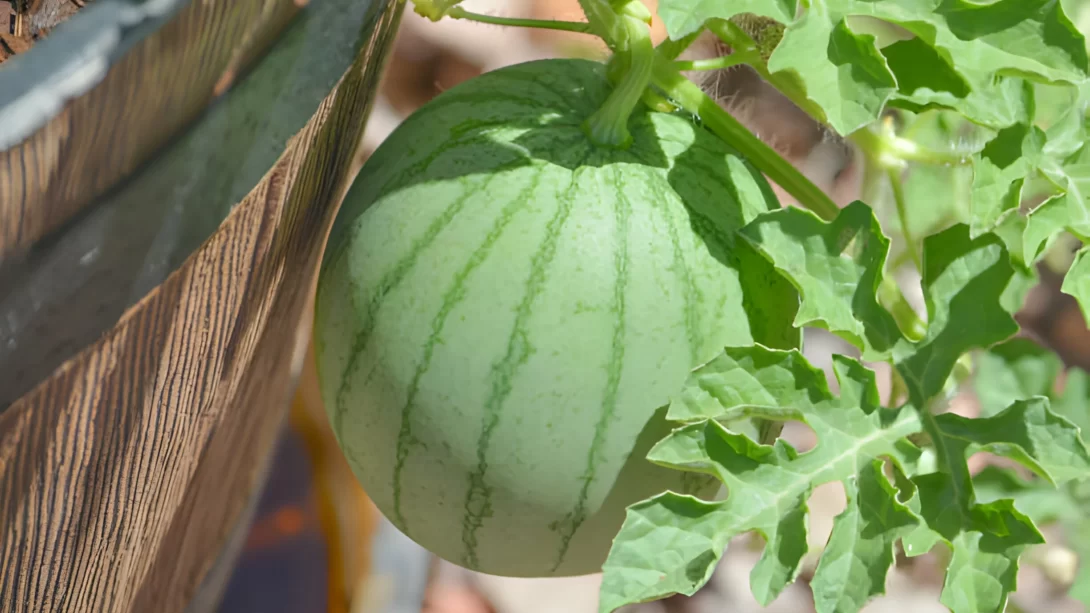Sugar Baby watermelons, known for their sweet flavor and convenient size, are a popular choice among home gardeners and fruit enthusiasts. A member of the Citrullus lanatus family, these melons are prized for their deep red, juicy flesh and relatively small size, making them perfect for a family treat. Picking them at the right time is crucial to ensure they have reached their peak sweetness and ideal texture.
Sugar Baby Watermelons
Sugar Baby watermelons are a variety of watermelon that is smaller and sweeter than many other types. They typically weigh between 6 to 10 pounds and have a dark green, almost black rind. Unlike larger watermelon varieties, Sugar Babies are known for their thinner rinds and dense, sweet flesh, making them a favorite for personal consumption. Their compact size also makes them well-suited for growth in smaller gardens or spaces.
Ideal Growing Conditions for Sugar Baby Watermelons
Growing Sugar Baby watermelons requires specific conditions to ensure a successful harvest. These melons thrive in warm, sunny environments and do best in temperatures between 70 and 90 degrees Fahrenheit. They prefer well-drained, sandy loam soil with a neutral pH. Regular watering is important, especially during the fruit setting and growing stages. However, it’s crucial to reduce watering once the fruit starts to mature, as too much moisture late in the growing process can dilute the sweetness of the fruit.
Signs of Maturity in Sugar Baby Watermelons
Determining when a Sugar Baby watermelon is ripe for picking is key to enjoying its optimal sweetness. There are several signs to look for:
- Color Change: The rind changes from a bright, shiny green to a duller hue. This is a subtle but important indicator.
- Tendril Dryness: Near the fruit’s stem, a curly tendril will begin to dry out and turn brown as the melon matures.
- Thumping Sound: When thumped, a ripe Sugar Baby watermelon produces a hollow sound. This age-old technique requires some experience to distinguish the subtle differences in sound.
- Ground Spot: The spot where the melon rests on the ground turns from light green or white to a yellow or creamy color as it ripens.
Harvest Timing
Sugar Baby watermelons generally reach maturity approximately 75 to 80 days after planting. However, this timeline can vary depending on growing conditions like climate and weather patterns. It’s crucial to monitor the melons closely as they approach this age, looking for the maturity signs mentioned earlier. Harvesting too early can lead to a lack of flavor, while waiting too long can result in overripe, mushy fruit.
Harvesting Techniques
To harvest a Sugar Baby watermelon, use a sharp knife or garden shears to cut the stem close to the fruit. It’s important to handle the melons gently to prevent bruising. Be sure to leave a few inches of the stem attached to the melon, as this can help prevent premature rotting. Once harvested, Sugar Baby watermelons do not continue to ripen significantly, so it’s essential to pick them when they are at their peak ripeness.
Post-Harvest Handling
After harvesting Sugar Baby watermelons, proper handling is crucial to maintain their freshness and flavor. These watermelons should be cleaned gently to remove any field dirt. It’s important to store them in a cool, dry place if they are not being consumed immediately. Ideally, Sugar Baby watermelons should be kept at a temperature of about 50-60°F. However, they should not be stored for prolonged periods as they are best enjoyed fresh. Care should also be taken to avoid storing them near ethylene-producing fruits, as this can lead to over-ripening.
Culinary Uses of Sugar Baby Watermelons
Sugar Baby watermelons are celebrated for their sweet, refreshing taste, making them perfect for a variety of dishes. They can be enjoyed fresh in fruit salads, as a hydrating snack, or juiced for a refreshing drink. Their compact size also makes them ideal for pickling or incorporating into desserts. For a creative twist, Sugar Baby watermelon can be grilled or added to savory dishes for a sweet and juicy flavor contrast.
Challenges in Growing and Harvesting
Growing and harvesting Sugar Baby watermelons can present challenges such as pest control, disease management, and ensuring proper pollination. Common pests like aphids and cucumber beetles can be managed through natural predators or appropriate insecticides. Diseases like powdery mildew and fusarium wilt require preventive measures like crop rotation and proper spacing. Ensuring adequate pollination is also crucial, which may involve attracting pollinators to the garden or, in some cases, hand-pollinating flowers.
Conclusion
Picking Sugar Baby watermelons at the right time is essential for enjoying their peak flavor and texture. By understanding the signs of maturity, employing proper harvesting techniques, and following appropriate post-harvest handling practices, gardeners can savor the sweet rewards of their labor. Whether enjoyed fresh, in culinary creations, or as a healthy snack, Sugar Baby watermelons offer a delightful taste of summer, making them a cherished addition to any garden.



